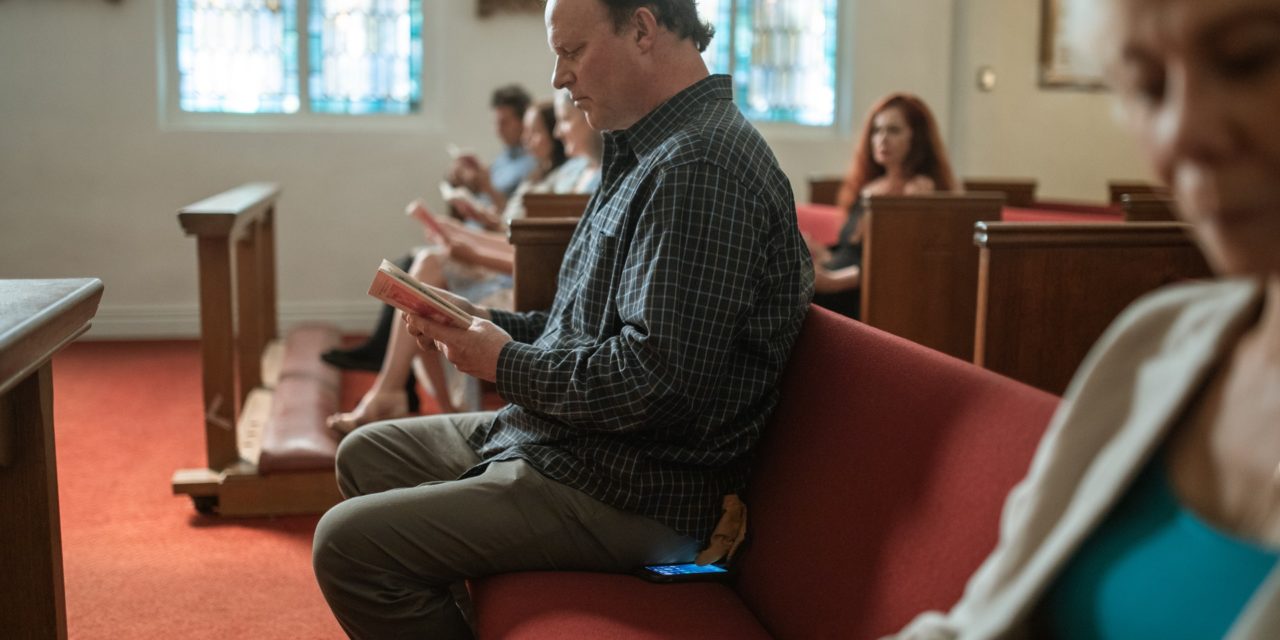How to Create an Inviting Church
To the unchurched, every inch of your church is communicating acceptance or rejection. | by Michael Knight
Let brotherly love continue. Do not forget to entertain strangers (Hebrews 13:1 NKJV).
No one likes to feel out of place. People, places, and things can cause all of us to feel a little awkward, like we don’t belong. Seeing an unknown person, being in an unfamiliar location, having a stain on our clothing or a bad haircut all can make us feel as if the whole world is staring at us.
People do not like feeling ill at ease, especially in an unknown place like a church. There is a big difference between feeling indifferent and getting comfortable enough to listen to the Holy Spirit. Strategically, planning an inviting image is crucial to the evangelism of wandering souls looking for a new home. How might someone feel the first time they walk into the unfamiliar territory of your church? How can three things—people, places, and things—create an inviting image?
What we say without using words is a fundamental question for every pastor. Coke, Pepsi, restaurants, shopping centers, and coffee shops understand the importance of creating the power of inviting environments. In commerce, people work hard to develop an inviting environment.
We in the church can expedite fulfilling the Great Commission by strategically empowering the nouns—people, places, and things—to facilitate an image of acceptance. Here are three points to go over with your staff or evangelism team:
People
Christ died for people. The church is made up of people and exists to reach people.
Think of the dates that remind us the world has changed. This is not A.D. 1950. We live in 2021 B.C.E. The notation “B.C.E.” itself should remind Christians that Christ is being replaced in our culture. If 2020 taught us anything, it taught us that, “We’re not in Kansas anymore.”
Three essentials stand out about creating inviting places for people in the 21st century:
- People today are biblically illiterate.
William Butler Yeats, the Irish poet, said, "Think like a wise man, but communicate in the language of the people."
We can no longer approach secular people and assume they have any background or childhood memories of Christianity. Today, there can be no assumptions they know our lingo, dress, culture, or music. In a 2007 cover story, Time magazine reported only half of U.S. adults could name even one of the four gospels.
Years ago, in Lenexa, Kansas, I invited a non-practicing Buddhist to our church. She promised me in all sincerity she would come. I never found her. When I saw her again, I asked, “Why didn’t you come?” Her answer startled me. She said, "I did come. I did not know where to meet you.” She then asked, “What is a "sanctuary"? Do not assume that visiting people know what you know. We must work hard at cultural contextualization, and even harder in ways the target population will understand.
- People today are doubtful.
The American Bible Society commissioned Barna to conduct The State of the Bible 2012. When Mosaics (18–27) and the elderly (66+) were asked what their primary unfavorable emotion was when they read the Bible, both groups reported "confused" and "doubtful." Just like the ancient Greeks, many people today feel as if God is mad at them. They see the Genesis story as God on a witch hunt, not a rescue mission.
Secular society is erroneously eating away at biblical truths. However, many of our pulpits are not refuting their putrid challenges. When people try our churches, they need a message that directly replies to the Christian faith's reliability. Visitors are responding to the invitation to investigate the claims of Christianity. According to many church growth experts, expository preaching is the way to "close the back door” and “open the front.” Expository communicating was rated by the un-churched as being the most desirable attribute they wished to find in a local church.
- Building an inviting church begins with personal evangelism.
Attraction to our church begins with the lives of our people. Salt has to penetrate the meat before it can preserve it. Research suggests that 82 percent of the 190 million unchurched people are at least somewhat likely to attend church if invited. Four percent of formerly churched adults are actively looking for a church to attend regularly. According to McIntosh, a church needs 4–5 percent of its worship attendance to be first-time visitors before significant growth can occur.
The stranger is not an intrusion. Building an inviting church image is a strategic initiative that begins with inviting the lost. Where do you find them? Where do you shop or get your gas, or coffee? Millions of Americans are just a conversation away from salvation. Especially in a Covid-19 world.
- There are relational factors crucial to invitation:
According to George Hunter III, the three relational factors are: (1) The congregation has a cheerful personality, with a deep belief in inclusion and a strong identity; (2) A low level of conflict and disunity; and (3) The pastor can generate enthusiasm.
Places
Building an inviting place does not happen by accident. According to Eric and Taylor of Whiteboard technology, people reject or accept a website within the first 18 seconds. Many church growth experts state the average family makes up their minds to return or never return to our congregations within the first ten to twelve minutes of their visit. The following are a few points of wisdom on building inviting environments:
- Postmodern people want their buildings to look the way they want to feel—casual and comfortable. How would you like visitors to feel in your home?
- Manufactured friendliness is not enough. At our church, we train people to go way out of their way to say hello—from the parking lot to the opposite side of the sanctuary and to talk to people who are entirely different from themselves.
- Beautify your property. I recently went to Istanbul, Turkey, on a study tour. I could not help but notice how appropriate some of the world's oldest churches created such magnificence, ambiance, and environments through architecture alone. In biblical Christianity, the basilicas and their grounds always sent a clear message of God's beauty and splendor. We are stewards of God's property. How we maintain it tells God and the lost what we think of Him.
- Upgrade your childcare. Church growth experts all teach us that the unchurched judge their experience in our church three ways—the bathrooms, the lobby, and the nursery. In research, the nursery was the number one unrequested answer people gave. Today, people are even more protective of their families. Simply said, the unchurched believe (often unconsciously) that if we cannot or will not keep our nurseries, bathrooms, and lobbies clean and up-to-date, then we certainly cannot be trusted with their children.
- Clear directions. Social scientists have studied the flow of experience. They have identified the main elements that are needed for a person to describe their experience as enjoyable. The number one requirement is clear signage. They need to know what to do and where to go.
- Enhance your worship service. Church services are about Christians coming together for community and instruction. However, it is easy to forget that the very first churches were absent of chairs. When the church did add them, they were for the sole use of the unconverted. Today, sanctuaries have become the place of evangelism where we communicate the essential information on earth. One of the laws of transmitting communication is to place informational thoughts, feelings, emotions, or attitudes into a form that others recognize. As an intellectual pastor, I don’t suggest dumbing down Christianity. However, the cultural contextualization where the masses understand the message in their language is the key to evangelism. Nowhere in Scripture does it say that we have to communicate information about the Ancient of Days in archaic ways.
- Connect people relationally. Social organization cannot happen unless there is, to some degree, a sense of "order." On average, if a visiting person is not connected into some social grouping within your church within the first two weeks of their invitation, they will not return. The social organization takes place when two or more individuals interact with one another.
- A hostile world needs a positive message. Being positive and uplifting is not a sign of a watered-down gospel. The problem with many of us is that we preach the Fall as if it were the only message of the gospel. The gospel remains good news for people who are looking for places of hope.
Things:
It is incredible to think about what communicates to people. St. Francis of Assisi has been credited with saying, "Preach the gospel all over the world and when you have to, use words." The ancient Greek word for the symbol (a thing) is where the etymology of the word “hospitality” originated. After an occasion of hospitality, a Greek host would give the departing guest a ring or a coin that had been broken in half—keeping one half for himself/herself and the other for the departing guest. The host did this in hopes that the two parts of the symbol would one day be reunited.
A symbol is an interpretation by our minds or imagination. Neurologists have recently discovered the "three brains–one dimension" decision-making process. The new brain "thinks," the middle brain "feels," and the old brain "decides." The old brain triggers the decision by taking the data from the new brain, the emotions, and feelings from the second brain, and considers the input from the other two brains that trigger the decision. What does this mean for pastors? It tells us that we have to pay attention to our church lobbies, creative children's churches, logos for each ministry, and church branding.
To the unchurched, every inch of your church is communicating acceptance or rejection. Christianity incorporated symbols from the start. One key to using symbols today for enhancing our invitation is to think through the flow of experience. What process are people logically taking in as they enter the sanctuary?
Hagai Sophia's church in Istanbul has been the largest church in the world for more than one thousand years. Its architectures knew their objectives. The towering entrance doors to the sanctuary are massive. They give the parishioner the idea they are entering into something grand.
The science of flow tells us that one needs a balance between challenges, actions, and awareness. Placement of items help us to design a visitor’s often unconsciousness journey of preparing to "meet God." Objects out of place speak to disorganization. Complicated or distracting items make a visitor feel awkward and increases their self-consciousness. The idea is, "welcome, do not embarrass."
The visitor is looking for an experience and a call to action. When the flow of discovery is designed, the visitor can feel comfortable, which causes self-consciousness to disappear. The result? The presence of the Holy Spirit may now speak to a settled heart.
Our job is to prepare the way for the unction of the Holy Spirit, who is the agency of creativity. He is the personage of the Trinity that has always used symbols such as doves, wind, smells, candles, etc., to announce the real presence of a creative, loving, and inviting God.
Let us be led of the Holy Spirit in our preparations for the souls He is sending our way.






